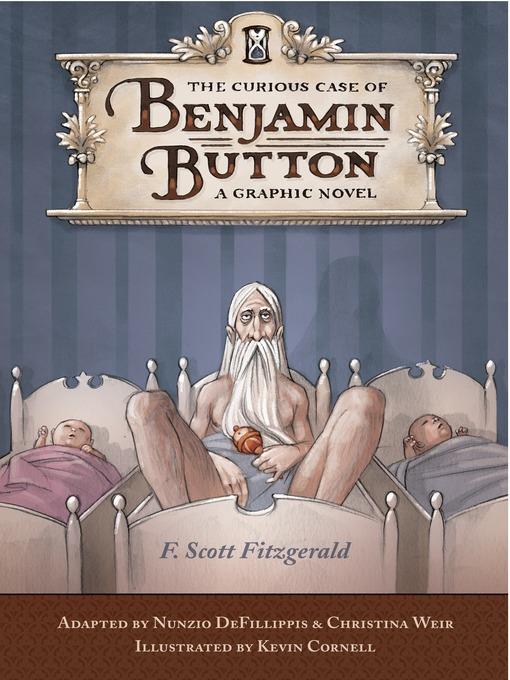
The Curious Case of Benjamin Button
فرمت کتاب
ebook
تاریخ انتشار
2015
Lexile Score
1010
Reading Level
6-8
نویسنده
Christina Weirناشر
Quirk Booksشابک
9781594748141
کتاب های مرتبط
- اطلاعات
- نقد و بررسی
- دیدگاه کاربران
نقد و بررسی

September 29, 2008
The impending release of a movie version starring Brad Pitt has made this humorous tale, formerly among the least known of Fitzgerald's short stories, a hot property. DeFillippis and Weir's adaptation preserves the original's straight-faced tone describing the career of a man who begins life in his 70s and grows progressively younger. If bystanders find this more than “curious,” they usually are just irritated at Benjamin for not behaving like other people. He himself is surprised as his body morphs, but is always open to new possibilities; his good-natured adaptability gives the social satire a gentle edge. Readers should, of course, look up Fitzgerald's original, but there's much to enjoy in this handsome little hardbound book. Cornell's sepia watercolor panels are especially clever at showing physical and emotional changes as Benjamin moves backward through life while America rolls forward for 70 years. A useful, gracefully written afterword by Donald G. Sheehy, professor of English, completes the volume nicely.

January 1, 2009
Gr 10 Up-In antebellum Maryland, the Button family is gifted with a wizened newborn whose physical age seems to grow ever younger over time. The scholarly afterword to this meticulous volume mentions the recent film adaptation of Fitzgerald's Jazz Age story, but it would be a mistake to assume that this volume has been created simply because of the media tie-in. It is a strikingly literal adaptation, re-creating dialogue, narration, and even chapter breaks with an assured and deliberate hand. While Fitzgerald's light tone is well preserved, it is the artwork that is the most striking, despite what could be construed as a dour use of gray and sepia. It is highly evocative, with an excellent use of facial expression to moving and comic effect. As the story obviously must address the particulars of physical age, Cornell depicts not just the transformation of Benjamin's face, but also his changing poise and confidence with well-rendered body language. While a thoroughly fine work, the lightly funny, softly satiric material will not produce peals of laughter, and the subject matter may strike teens as more unusual than engaging. Still, this is a work of quality that should find a small but appreciative audience."Benjamin Russell, Belmont High School, NH"
Copyright 2009 School Library Journal, LLC Used with permission.

January 1, 2009
Grades 10-1 One of Fitzgeralds (until recently)lesser-known stories, this satire follows the life of a man born as a septuagenarian who progresses through life backwards, becoming younger and younger each year. Here, the story is reproduced as a graphic novel, with sepia-toned art that lendsitself to the late nineteenth- andearly twentieth-century time period. While this effortis admirable for the fact that it has Fitzgeralds original text nearly intact (save some abridgement for the sake of dialogue), some of the time-sensitive satirical elements may not resonate with young readers. Still, growing old by growing youngholds a certainuniversal curiosity, andextends the appeal of this to readers other than Fitzgerald fans or those looking for new entry-points into classic literature. Of course, thebig-budget movie adaptationstarring Brad Pittwill only amplify interest.An afterword provides some context for this work in the whole of Fitzgeralds oeuvre, and offers a nicely ironic asideto his agent in which he despaired that it was unlikely this storywill ever bringme any movie money.(Reprinted with permission of Booklist, copyright 2009, American Library Association.)

























دیدگاه کاربران